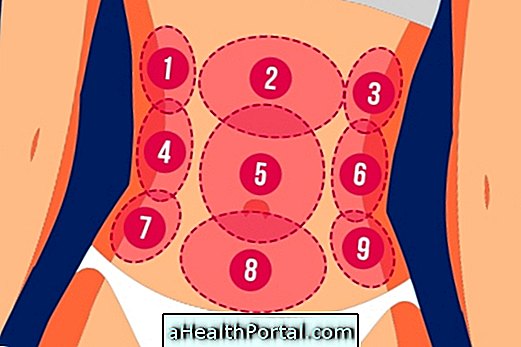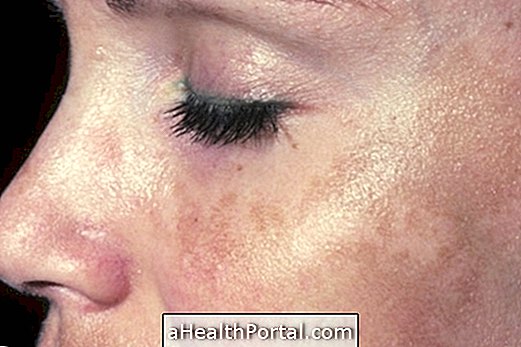Thyroiditis is inflammation of the thyroid, which can happen due to various causes such as changes in immunity, infections or use of medicines, so it is divided into different types such as Hashimoto's thyroiditis, lymphocytic thyroiditis, Quervain's thyroiditis or fibrous thyroiditis, example.
Thyroiditis may occur acutely, with rapid progression, or may occur more gradually, such as in subacute or chronic thyroiditis. Some of the symptoms that can indicate this inflammation include pain in the region of the neck, difficulty to swallow, fever and chills, always varying according to the type, besides being able to provoke consequences as the hypothyroidism or hyperthyroidism. Learn about the major diseases that can affect the thyroid.
In many cases, thyroiditis has a cure, however, the treatment and evolution of each case varies according to the type of thyroiditis and the reaction of the body of each person. To correctly identify a thyroiditis and what to do to treat, it is necessary to consult with the endocrinologist doctor, however, we will talk here about some of the main types:
1. Hashimoto's Thyroiditis (Chronic Thyroiditis)
Hashimoto's thyroiditis is the most common type of chronic thyroiditis, which is more common in women 30 to 50 years of age, although it may occur at any stage of life. It is an autoimmune disease, in which the body produces antibodies that end up attacking the thyroid cells, causing inflammation and change in its function.
- Symptoms : The main symptom is the appearance of goiter, which is the thyroid enlargement, not being common cause pain. There may also be symptoms of hypothyroidism, such as tiredness, drowsiness, dry skin and lack of concentration, for example, however, it may also alternate with periods of hyperthyroidism, with symptoms such as palpitations, insomnia, and weight loss;
- Treatment : It is usually done with the replacement of thyroid hormones, with the use of levothyroxine, however, its indication depends on thyroid function values, reflected in blood tests of TSH and free T4.
To learn more about how to identify and treat this disease, check out Hashimoto's Thyroiditis.

2. Queryin Thyroiditis (Subacute Thyroiditis)
Although its exact causes are unclear, it is known that this thyroiditis may be caused by virus infections, such as mumps, influenza, adenovirus, ecovirus or Coxsackie, for example, being more common in women 30 to 50 years. This disease causes an intense inflammation in the thyroid and the destruction of its cells.
- Symptoms : Pain in the thyroid region, which can radiate to the jaw or ears. The gland may be slightly enlarged, causing sore throat and difficulty swallowing. There may also be symptoms of airway infection, such as coughing and secretion. As thyroid damage can lead to the release of thyroid hormones into the circulation, there may be symptoms of hyperthyroidism and, at a later stage, hypothyroidism;
- Treatment : It is made with medicines to relieve symptoms, especially with anti-inflammatories such as Ibuprofen or Nimesulide, for example. In cases of severe or persistent symptoms, the use of corticosteroids, such as Prednisone, is indicated.
To confirm this type of thyroiditis, the doctor may request tests such as VHS, which identifies the presence of inflammation, in addition to the radioactive iodine uptake, which evaluates thyroid function. If you still have questions, your doctor may perform a thyroid puncture, which may rule out other causes, such as a cyst or cancer.
3. Lymphocytic Thyroiditis (Silent Thyroiditis)
Lymphocytic thyroiditis, also known as silent or painless, is also caused due to autoimmunity, in which antibodies produced in the body attack thyroid, being more common in women from 30 to 60 years.
- Symptoms : It does not usually cause pain or tenderness in the thyroid, however, it causes the release of thyroid hormones into the bloodstream, which can cause a period with symptoms of hyperthyroidism, which can recover from a few weeks to months. In some cases, there may also be a brief period of hypothyroidism;
- Treatment : it does not have a specific treatment, being indicated the control of the symptoms of hyperthyroidism, and may be necessary the use of medicines like Propranolol to control the heart beats in hyperthyroidism or the replacement of hormones in the phase of hypothyroidism, for example.
When this type of thyroiditis affects women up to 1 year after gestation, it is called Postpartum Thyroiditis, which causes similar symptoms and treatment.
4. Riedel thyroiditis (fibrous thyroiditis)
It is another cause of chronic thyroiditis, however, much rarer, which causes lesions and fibrosis in the thyroid slowly and gradually, which can lead to hypotheireoidism.
- Symptoms : causes thyroid enlargement, painlessly, but may cause a feeling of weight in the neck, difficulty swallowing, hoarseness, feeling of suffocation and shortness of breath;
- Treatment : It is made with medicines to reduce inflammatory activity, such as corticoid, Tamoxifen or Methotrexate, for example. Replacement of thyroid hormones may also be indicated when thyroid function is impaired.
The diagnosis of Riedel thyroiditis is done with the thyroid aspiration and aspiration, which will evidence the lesions.
5. Other Thyroiditis
Other less common causes of thyroiditis include those caused by poisoning certain drugs, such as chemotherapy or Amiodarone, for example. Actinic thyroiditis is caused by radiation treatments in the neck region, which can cause inflammation or inhibition of thyroid cell function.
There are also thyroiditis caused by infections by bacteria such as Staphylococci and Streptococcus, or by fungi such as Aspergillus or Candida, for example, or even by some parasites and mycobacteria.























